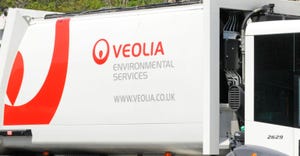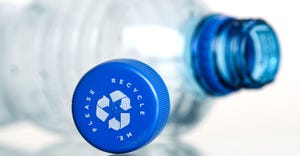Landfills are not stagnant environments. As they age, waste degrades, gas settles and leachate concentrations change. The industry is looking at how these events affect liners.
Landfill experts are tweaking existing protective systems and some predict that evolving innovations—specifically in synthetic liner technology—will potentially radically change the disposal industry landscape.
An ongoing focus has been to develop more efficient leachate management systems, particularly in dealing with outbreaks at the edges of landfills. There are leachate drainage systems at the bottom of landfills, but it’s a challenge to keep them functioning when they’re buried under 100 feet of garbage.
Pumping up baseliner systems
Baseliner systems, installed underneath landfills, have three components that work together: a clay liner, a geomembrane component and a drainage component. The geomembrane layer prevents liquid leakage, with the drainage layer collecting and removing liquid from the geomembrane’s surface. The clay component stops leakage should the geomembrane layer be compromised.
The components and geosynthetics for this system have not changed. But the industry has learned more about how they behave and made tweaks to improve how they function, says Michael Stubbs, president of engineering firm Hodges, Harbin, Newberry and Tribble in Macon, Ga.
A primary focus has been on installing more robust drainage systems.
“We learned that we need more pipes as part of the liner system,” Stubbs says. “Where we may have installed one pipe before, now we have three. And we may have extra sumps or gravel to remove liquid more efficiently.”
When liquid meets gas
A decade ago one of industry’s most trying barriers was a problem that happened when liquid and gas met in the landfill. If gas pressure reaches a certain point, it forces leachate up and out of the site, impacting its stability.
“A lot of landfills we work with are in the south east,” Stubbs says. “It’s a wet environment, and leachate generation is an issue. The leachate was accelerating gas production, and the gas pressure was causing leachate outbreaks at the edge of landfill.”
The company dealt with the issue by installing multiple gas collection points at the drainage layer of leachate collection systems, surrounding the entire landfill.
“Prior to this approach there was no effective way to remove the gas from the top of the baseliner system,” Stubbs says. “Now we can alleviate the pressure, allowing liquid to flow through.”
Besides fine-tuning the technology, the industry has approached the issues from an operational stand, mandating annual minimum cleaning of drainage systems.
“You jet the pipes from one end to the other. A little preventive maintenance annually goes a long way in maintaining the system for the life of the facility,” says Stubbs.
Synthetic vs. natural clay has been a big leap
An evolution that is pushing liner technology forward is tied to a synthetic product that does the job of clay liners. But it’s easier to deal with, cheaper and at least as efficient.
“Liners with components of natural clay are costly and time-consuming to process and install,” says Craig Benson, dean of engineering at the University of Virginia. “But with a prefabricated geosynthetic liner, you roll it out and it’s in place. Its performance is predictable, as the manufacturing process provides more control, where with natural clay there is moistening, compacting and other processes that contribute to variability,”
Coal ash and liners
As a need for safe, efficient coal ash disposal methods opens opportunities for landfill operators, liners have become a major issue. Some geosynthetic liners are altered adversely by ash leachate and become permeable.
“We found we can create factory-made liners specifically to work well with coal ash if we change ingredients in the liner and blend clay components with water-soluble polymer,” says Benson.
The polymer fills the pores that open in conventional liners when those liners come in contact with coal ash, thus containing leachate.
The industry can now engineer liners with bentonite polymers blended with clay that are resistant to any kind of leachate, whether from coal ash, municipal solid waste or other waste, according to Benson.
“That’s the biggest change in liners in the last decade,” he says.
“This technology will allow us to create lining systems that are highly protective of the environment for any waste stream we would have to manage. It provides industry stakeholders with a high degree of confidence in our ability to handle whatever stream you can imagine.”
About the Author(s)
You May Also Like




